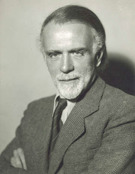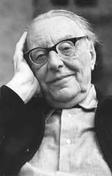Music at Rosanna Primary
At Rosanna Primary School, we use the Kodaly method and the Orff approach as the core of our music program. Here is a brief explanation of both concepts.
 Zoltan Kodaly
Zoltan Kodaly
The Kodály concept was inspired by the philosophies of the Hungarian composer and educator, Zoltan Kodály (1882 – 1967). Kodály believed that a person cannot be complete without music and that music serves to develop a person on all levels – emotionally, spiritually and intellectually. The use of the voice is one of the most defining features of the Kodály approach. The voice is the most accessible of all instruments and this makes it most suitable for musical instruction and can lead to a highly developed musical ear. By focusing on learning through engaging with music, singing, playing, moving and enjoying, music becomes part of the natural learning process.
Kodály collated and included in his program the best music teaching practice available at the time. To teach rhythm we use the French syllable names, as they are onomatopoeic and easy for children to use and understand. To teach pitch we use the Solfege syllables created by Guido of Arezzo in the 10th century, and Curwen hand signs developed in 19th century England by Sarah Glover and then John Curwen.
Kodály believed that every person has musical aptitude and that singing should be the foundation of all music education. Kodály believed that musical instruction should reflect the way that children learn naturally. Through singing games, fun and play the child discovers the musical elements as they are presented sequentially and has the opportunity to enter the world of music through the creative development of the ear and the eye.
Kodály collated and included in his program the best music teaching practice available at the time. To teach rhythm we use the French syllable names, as they are onomatopoeic and easy for children to use and understand. To teach pitch we use the Solfege syllables created by Guido of Arezzo in the 10th century, and Curwen hand signs developed in 19th century England by Sarah Glover and then John Curwen.
Kodály believed that every person has musical aptitude and that singing should be the foundation of all music education. Kodály believed that musical instruction should reflect the way that children learn naturally. Through singing games, fun and play the child discovers the musical elements as they are presented sequentially and has the opportunity to enter the world of music through the creative development of the ear and the eye.
 Carl Orff
Carl Orff
The Orff Schulwerk approach combines music, movement, drama, and speech into lessons that are similar to child's world of play. It was developed by the German composer Carl Orff (1895–1982) and colleague Gunild Keetman (both pictured) during the 1920’s.
The Orff approach encourages students to enjoy making music as individuals as well as in groups. The instruments used are xylophones, metallophones, recorders and untuned percussion. Each part is introduced gradually, and added to when the children are ready. This approach engages students, as they are able to participate to a level they feel comfortable with, while enjoying creating music as part of a group.
The Orff approach encourages students to enjoy making music as individuals as well as in groups. The instruments used are xylophones, metallophones, recorders and untuned percussion. Each part is introduced gradually, and added to when the children are ready. This approach engages students, as they are able to participate to a level they feel comfortable with, while enjoying creating music as part of a group.

